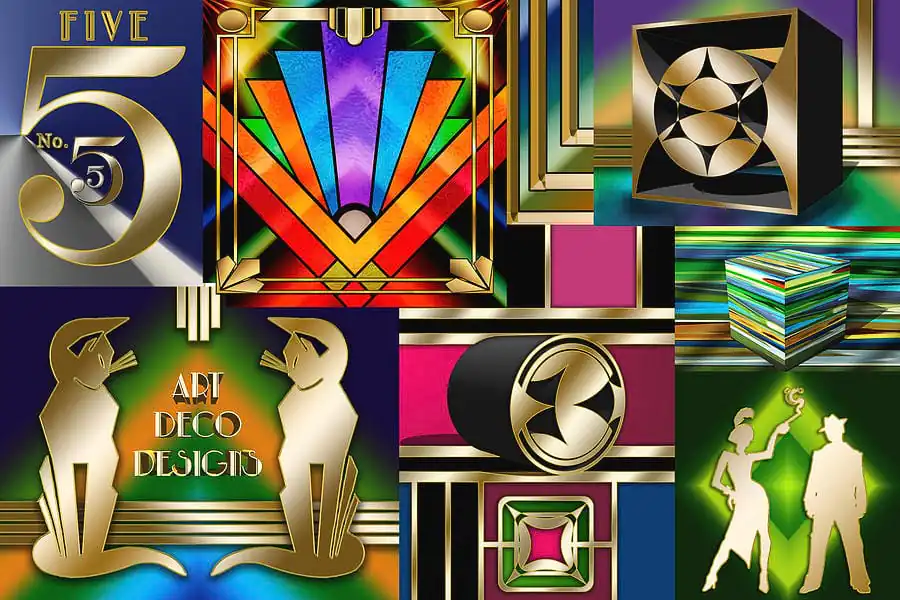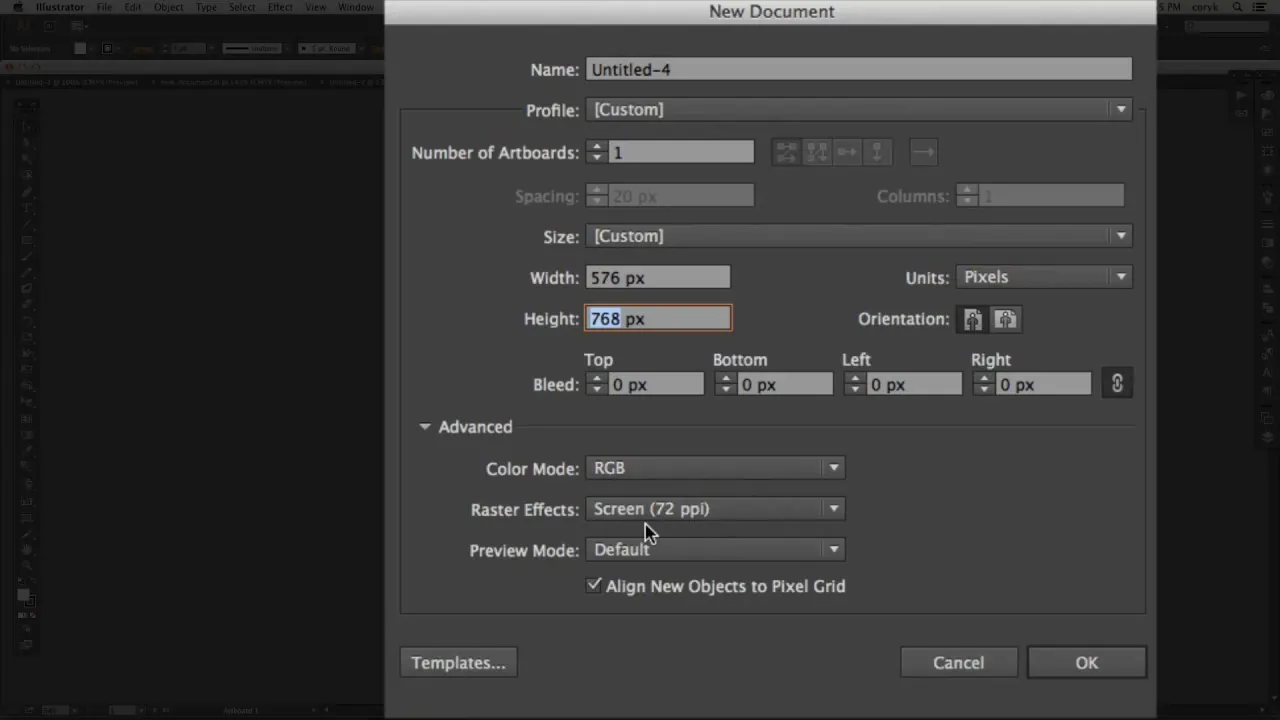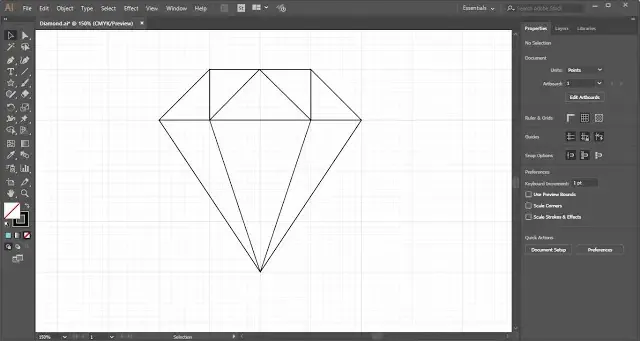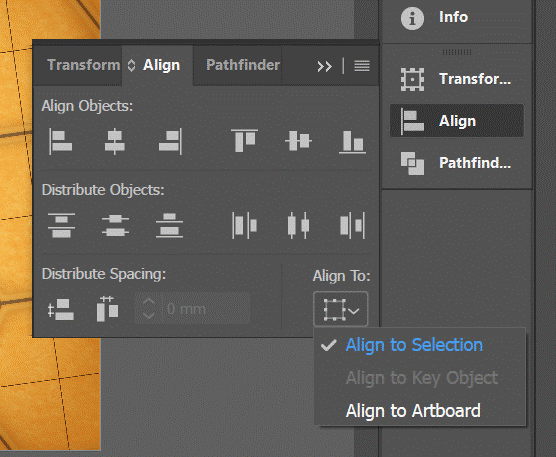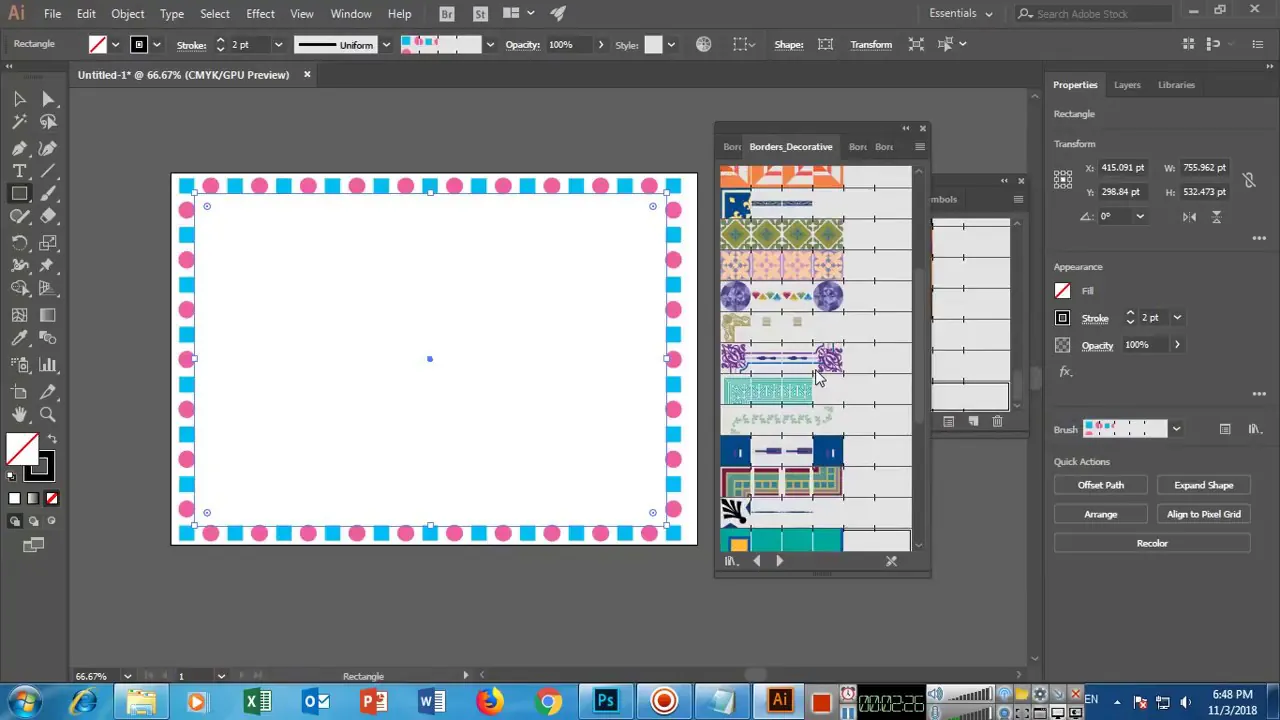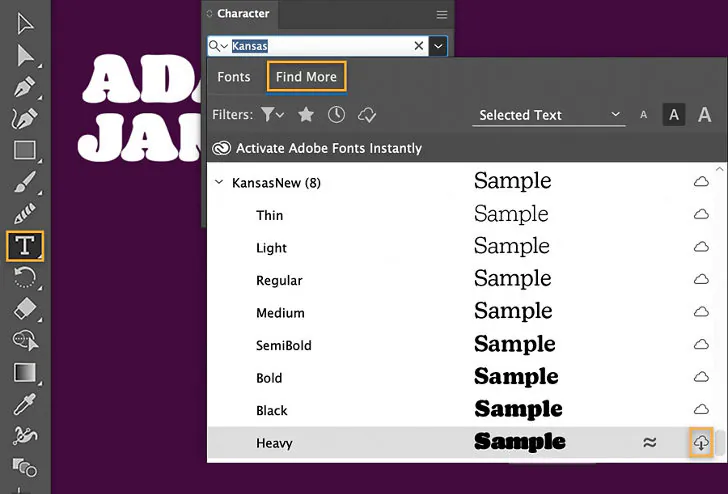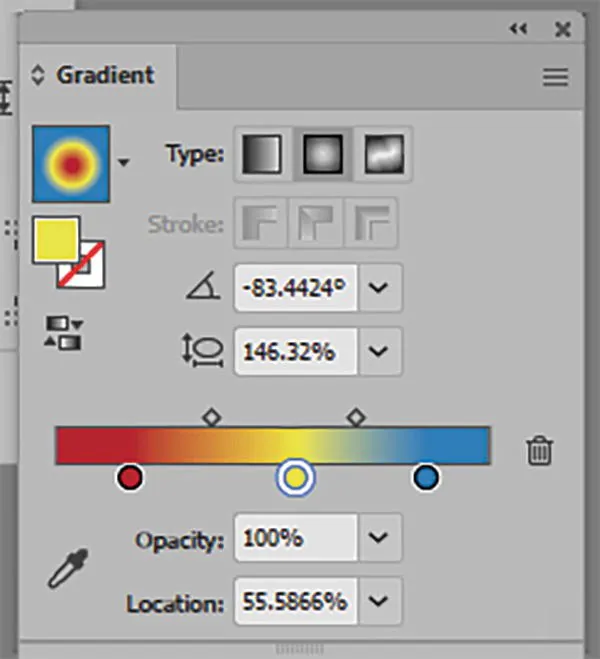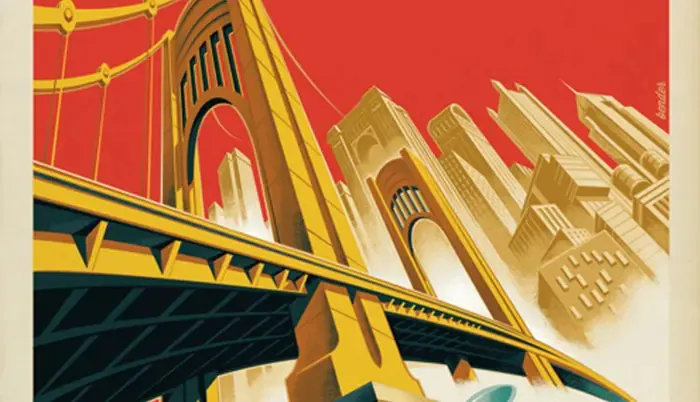
How To Create Art Deco In Illustrator
The Art Deco movement commenced in the 1920s and became a prominent architectural and decorative arts trend of that period. The Art Deco movement’s probe of magnificence in all elements of life was a direct reflection of the abundance production of numerous products using machine-age technology, which was relatively new, as opposed to classic crafting methods. The original deco art pieces, from commercial goods to finely created luxury items, all aimed to create an elegant, anti-traditional look that denoted prosperity and sophistication. The modern Art Deco grasps a combination of impacts, mixing components from different social and creative conventions. Its trademark characteristics incorporate flamboyant geometric shapes, rich symmetry, and an affinity for extravagance. Bearing ideas from various sources such as Cubism, Futurism, and the exoticism of Antiquated Egypt, Art Deco exemplifies a heap of shapes, crossing designs, inside plans, enriching expressions, mould, and realistic plans. Modern artworks, especially the prevailing digital painting adopting various software, are reviving traditional styles like that of Deco Art more energetically and vigorously. Likewise, this blog article will underline the essential steps to creating your Deco Art using Adobe Illustrator, one of the most utilized digital illustration software.
Step 1: Exploring Historical Features
Look at Art Deco architecture, layouts, and art for brainwave.
Observe geometric forms, patterns, and lavish subtle elements often seen in Art Deco compositions.
Consider the impact of Art Deco on different mediums like architecture, interior design, style, and visual expressions.
Look at the chronicled setting and social importance of Art Deco amid the early 20th century.
Recognize key characteristics such as striking geometric shapes, smooth lines, and luxurious ornamentation that characterize the Art Deco fashion.
Look for motivation from Art Deco points of interest and famous works by renowned artists and originators of the time.
Keep a record of colour plans, surfaces, and themes commonly related to the Art Deco plan.
Be open to getting motivation from different sources to illuminate your definition of Art Deco aesthetics.
Step 2: Initiating Your Artwork
Initiate Adobe Illustrator and open a new document by tabbing on “File” > “New” from the menu bar.
Indicate the measurements of your canvas based on your artwork’s aimed estimate and aspect ratio.
Look at your document’s resolution, guaranteeing it is appropriate for printing or digital show.
Select the colour mode for your file, like RGB for digital artwork or CMYK for print.
Decide the number of artboards required for your venture, particularly if you want to form numerous compositions inside the document.
Establish guides and grids to help with arrangement and format. Utilize Illustrator’s “View” menu to flip the visibility of guides and grids as required.
Spare your document with an expressive filename and location on your computer to specify simple get-to and organization.
To control your artwork aptly, acquaint yourself with the workspace and tool features in Illustrator, such as the toolbar, panels, and menus.
Step 3: Drawing Geometric Forms
Head to the Illustrator’s Shape tools within the toolbar to make geometric shapes like squares, rectangles, circles, triangles, and polygons.
Press on the specified shape tool and drag on the artboard to form the shape. Press the Shift key with dragging to keep proportions for ideal squares and circles.
Play with the measurement, scale, and rotation of geometric shapes to set up the base of your composition.
Fuse numerous shapes by overlapping or adjusting them to form complex geometric designs and courses of action.
Utilize the Direct Selection highlight using key A to manipulate anchor focuses and alter the form of your geometric shapes as needed.
Lay hold of Illustrator’s Pathfinder tools to integrate, subtract, cross, and partition shapes to form complex patterns and negative spaces.
Check into the Transform options within the Object menu to accurately position, turn, reflect, and copy shapes inside your work of art.
Keep up regularity in line weights and shapes across your composition to get a cohesive and rhythmic visual perfection.
Step 4: Enhancing Shapes Organization
Highlight symmetry and poise in your Art Deco-inspired work of Art, replicating the characteristic design standards of the movement.
Utilize alignment tools to guarantee the exact situating and arrangement of components inside your composition.
Get to the Align panel (Window > Align) or utilize the Control panel to adjust objects evenly, vertically, or according to their edges and centres.
Utilize smart guides and snapping choices to help order and distribute components equally over your artwork.
Try symmetrical compositions, where pieces are reflected or recurrent along a central axis or focal point.
Produce visual interest by comparing symmetrical and deviated components to your composition, including vigour and profundity.
Keep up a sense of visual harmony by dispersing visual weight equally all through your artwork, guaranteeing that no single component rules the composition.
Assume negative space and the link between positive and negative forms, leveraging symmetry to form uniformity and rhythm inside your plan.
Step 5: Incorporating Decorative Elements
Improve your Art Deco-inspired work of art with decorative components and complicated details that inspire the extravagance of the period.
Test with geometric designs, stylized greenery and fauna, sunbursts, chevrons, crisscrosses, and other embellishing themes commonly related to the Art Deco plan.
Use Illustrator’s drawing tools, such as the Pen and Shape tools, to form custom fancy components and designs.
Join Art Deco-inspired borders, outlines, and embellishments around vital components of your composition to include visual hypnotism and profundity.
Test with layering and stacking decorative subtle elements to form perplexing and energetic designs.
Investigate the utilization of gradients, patterns, and textures to include profundity and measurement of your decorative components.
Pay consideration to scale and proportion when including fancy points of interest, guaranteeing they complement the overall composition without overpowering the viewer.
Point for stability between effortlessness and complexity, permitting fancy points of interest to improve the visual impact of your artwork without straying from its clarity and lucidness.
Step 6: Using Art Deco Text Style
Follow typography styles characteristic of the Art Deco time, highlighting smooth, geometric letterforms and strong contrasts.
Select textual styles that accentuate the essence of the Art Deco plan, such as sans-serif textual styles with clean lines and exquisite bends.
Play with letter spacing, kerning, and text style weights to attain visual uniformity and agreement inside your typography.
Consolidate stylized lettering and embellishing components to upgrade the Art Deco style of your typography.
Employ Illustrator’s type tools to form headlines, titles, and text components inside your work of art.
Explore text arrangement and layout, considering progression and accentuation to direct the viewer’s eye through the composition.
Merge typography with visual components to make cohesive and coordinated plans that pass on your thought message or idea.
Address the arrangement and consistency in typography, guaranteeing that content components complement the general composition and improve its visual effect.
Step 7: Redirecting the Color Choices
Select a colour palette propelled by the dynamic and lavish tones associated with Art Deco.
Research about intense and immersed colours such as deep blues, dense reds, emerald greens, gold yellows, and gleaming metallics like gold, silver, and bronze.
Consider contrasting colour combinations to boost visual appeal and energetic pressure inside your artwork. Matching striking primary colours with quieted neutrals or complementary shades can inspire the excitement of the Art Deco period.
Try gradients and colour moves to include profundity and proportions in your composition. Use the Gradient tool to form smooth colour blends and moves between distinctive tints.
Attend to colour psychology and the passionate effect of your chosen palette. Dynamic colours inspire vitality, zeal, and enthusiasm, whereas gentler tones may pass on style, modernity, and tranquillity.
Don’t hesitate to experiment and liveliness with colour, permitting your imagination to direct you as you bring your Art Deco-inspired vision to life in Adobe Illustrator.
Step 8: The Ultimate Refinements
Take an observant survey of your Art Deco artwork and make refining tweaks to guarantee coherence and visual effect.
Assess the prevalent composition, concentrating on proportion, symmetry, and significant points inside the plan.
Regulate the situation and scale of components to make a visual pecking order and direct the viewer’s eye through the artwork.
Ponder over, including negative space and pacing, to make breathing room and accelerate the general coherence of the composition.
Edit the subtle facets of ornamental components, typography, and colour choices for a concordant and cohesive look.
Try with distinctive courses of action and assortments of your artwork, discovering alternative compositions and visual approaches.
Look for input from peers or trusted colleagues to pick up new points of view and recognize zones for change.
After you are pleased with the ultimate development, save your artwork in a high-resolution format appropriate for printing or digital dispersion.
Consider displaying your Art Deco-inspired artwork in exhibitions, presentations, or online stages to share your inventive vision with a more extensive audience.
Conclusion:
In summary, with its love of swiftness and devotion to technology, the Art Deco style profoundly affects graphic arts, showing the independent-to-time nature of art. Abstract features like the use of parallel lines and curving forms imply symmetry and streamlining when employed in the artwork. Art Deco has a transnational impact on images, designs and illustrations and continues to encourage artists and viewers simultaneously. By adopting this art approach in your compositions and adhering to design principles and techniques, you can also create enthralling designs that enlighten your audience and their sentiments about the uniqueness of art.



